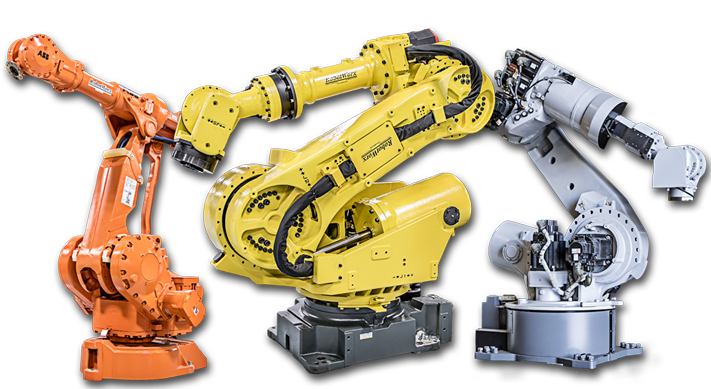Mastering Industrial Robotics Technology: A Comprehensive Guide
In today’s fast-paced world, industries are constantly seeking ways to improve efficiency, reduce costs, and enhance precision in their operations. Industrial robotics technology has emerged as a transformative solution, revolutionizing a multitude of sectors and processes. This comprehensive guide will take you on a journey through the fascinating realm of industrial robotics, from its evolution and types to its applications, benefits, and challenges. Let’s explore the technology that is shaping the future of industries.
I. Introduction
The world of industrial robotics technology is a captivating one. From manufacturing to healthcare, these sophisticated machines have found applications in various domains. However, before delving into the specifics, let’s start with the basics.
What is Industrial Robotics Technology?
Industrial robotics technology involves the use of autonomous machines, commonly known as robots, to perform tasks that traditionally required human intervention. These robots are equipped with an array of sensors, actuators, and controllers, allowing them to perform precise and repetitive tasks with high efficiency.

II. The Evolution of Industrial Robotics
A Journey Through Time
Industrial robotics technology has come a long way since its inception. Dating back to the early 20th century, the evolution of industrial robots is a testament to human ingenuity.
Milestones in Industrial Robotics Evolution
| Year | Milestone |
|---|---|
| 1954 | First industrial robot, the Unimate, introduced |
| 1973 | SCARA (Selective Compliance Assembly Robot Arm) robots |
| 1980s | Introduction of microprocessors in robot controllers |
| 1990s | Emergence of more flexible articulated robots |
| 21st Century | Integration of AI and IoT in industrial robotics |
III. Types of Industrial Robots
Industrial robots come in various shapes and sizes, each designed for specific tasks. Let’s explore some of the common types.
1. Articulated Robots
Articulated robots are versatile with multiple joints, allowing them to mimic human arm movements. They excel in tasks that require flexibility and precision.
2. SCARA Robots
Selective Compliance Assembly Robot Arms (SCARA) are ideal for tasks involving high-speed, precise, and repetitive operations, often seen in assembly lines.
3. Cartesian Robots
These robots operate along a grid system, making them suitable for applications requiring straight-line movements in various planes.
4. Delta Robots
Delta robots are incredibly fast and accurate, mainly used in pick-and-place operations and packaging.

IV. Key Components of Industrial Robotics Technology
The effectiveness of industrial robots relies on a set of essential components. Here’s a breakdown of their roles:
Sensors: Industrial robots are equipped with sensors, such as vision systems and proximity sensors, which enable them to perceive their surroundings and respond to changes.
Actuators: Actuators are responsible for the robot’s movements. Electric, hydraulic, or pneumatic actuators drive the various parts of the robot.
Controllers: The brain of the robot, controllers process data from sensors and guide the robot’s movements with precision.
V. Applications of Industrial Robotics Technology
The versatility of industrial robots is apparent in their widespread applications across industries.
Manufacturing: Robots are indispensable in modern manufacturing, assisting in tasks like welding, painting, and assembly.
Automotive: In the automotive industry, robots handle complex tasks like car assembly, painting, and welding.
Healthcare: Industrial robots play a crucial role in surgeries, assisting surgeons with precision and reducing the margin of error.
VI. Benefits of Industrial Robotics
The adoption of industrial robotics technology offers a range of advantages for businesses and industries.
1. Improved Efficiency: Industrial robots work tirelessly without fatigue, ensuring consistent productivity.
2. Enhanced Precision: Robots can perform tasks with micrometer-level accuracy, reducing errors.
3. Safety Improvements: Dangerous tasks can be delegated to robots, ensuring the safety of human workers.

VII. Challenges and Limitations
While industrial robotics technology offers numerous benefits, it’s essential to acknowledge the challenges and limitations:
Cost: Acquiring and implementing robotics technology can be costly, especially for smaller businesses.
Complexity: Operating and maintaining industrial robots may require specialized skills and training.
VIII. Trends and Innovations
Collaborative Robots (Cobots): A new era of robots designed to work alongside humans in a collaborative manner, increasing flexibility and safety.
Artificial Intelligence Integration: Robots are becoming smarter with AI, allowing them to adapt to dynamic environments.
Industry 4.0 and Smart Factories: The integration of IoT and data analytics is creating smart factories, where robots play a central role in optimizing production processes.
IX. Getting Started with Industrial Robotics
If you’re considering implementing industrial robotics in your business, here are the steps to get started:
- Assess Your Needs: Identify areas where robotics can improve your operations.
- Training: Provide your team with the necessary training to work with robots safely and effectively.
X. Future Prospects
As we look to the future, industrial robotics technology will continue to evolve. The potential applications are boundless, from space exploration to agriculture. Embracing this technology is not just a choice but a necessity to stay competitive and efficient.
In conclusion, industrial robotics technology has revolutionized industries and continues to shape the world of automation. The key to success lies in understanding the technology, its benefits, and its limitations. Whether you’re a seasoned professional or just beginning your journey into the world of robotics, this comprehensive guide should serve as a valuable resource.




